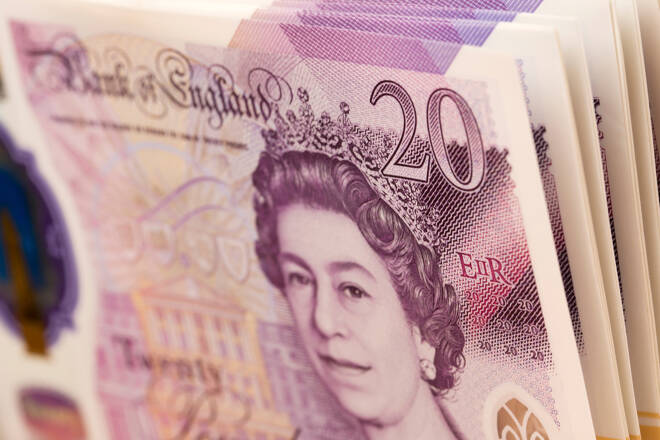Trade of The Week: GBP/USD to Sink Further?
By:
GBPUSD has entered this trading week at its weakest levels since 1985!
And it’s not just GBPUSD that’s winding back the clocks to the 1980s.
This week, if forecasts in some segments of the financial markets are to be believed, the central banks of the US and the UK may also trigger their largest rate hikes respectively since 1989!
Here’s what markets are currently forecasting in the lead up to these pivotal events:
Fed Rate Decision: Wednesday, September 21st
Hike by at least 75-basis points (bps).
If so, that would be its third consecutive hike of such magnitude, following similar moves at its June and July policy meetings.
Markets forecast a 22% chance (low odds, but not negligible) for a gargantuan 100bps – which would be its largest hike since 1989.
Bank of England (BOE) Rate Decision: Thursday, September 22nd
75bps hike (similar to the Fed) fully priced in.
If so, that would be the BOE’s largest hike in this ongoing rate-hike cycle that began in December 2021.
19% chance being accorded for a humongous 100bps hike this week – a move not seen since 1989.
How Would Fed + BOE Decisions Impact GBP/USD?
1) The central bank that can pull off the larger rate hike this week, relative to the other central bank, could see its currency strengthen.
E.g. If the Fed does trigger a 100bps hike, while the BOE only does 50bps, then we should see a lower GBPUSD.
2) Also, it could well depend on which central bank signals that it has more rate hikes in the pipeline.
As things stand, here are the forecasted peaks for US vs. UK interest rates:
- Fed’s forecasted peak = around 4.5% by March 2023.
(when markets think, for now, that the Fed will be done with its rate hikes).
That’s about 190 basis points more from the current 2.5%, excluding this week’s anticipated hike. - BOE’s forecasted peak = around 4.5% by August 2023.
That’s about 280 basis points higher than the current 1.75%, excluding this week’s anticipated hike.
Depending on the latest policy clues out of either the Fed or the BOE, the central bank with the higher forecasted peak (again, relative to the other) could see more currency strength this week.
E.g. If the Fed says it has a lot more room to hike US interest rates, while the Bank of England cites worries about raising rates too much for fear of dragging the UK economy into a protracted recession, such contrasting policy signals should lend itself to more GBPUSD declines.
What’s Next For GBP/USD?
From a technical perspective, GBPUSD appears due for a technical rebound, seeing as its 14-day relative strength index is on the cusp of breaking below the 30 threshold that denotes ‘oversold’ conditions (refer to above chart)
If so, any rebound for GBPUSD is likely to meet strong resistance around the following levels:
- 1.160 = 21-day simple moving average (SMA)
- 1.17382 = previous cycle high
To the downside, it’s tough to detect notable support levels in sub-1.14 territory, given the scattered price action from back in the mid-1980s when such levels were last seen.
However, at the time of writing, markets are predicting a greater-than-even chance (53%) that GBPUSD will remain below 1.14 for the next one-week period.
Some segments of the markets are even forecasting a 62% chance of GBPUSD touching levels as low as 1.125 over the same period!
Using a fundamental lens, markets are very much poised to react to the latest policy moves and clues out of the Fed and BOE in dictating how GBPUSD will perform this week.
For more information visit FXTM.
About the Author
Lukman Otunugaauthor
Lukman Otunuga is a research analyst at FXTM. A keen follower of macroeconomic events, with a strong professional and academic background in finance, Lukman is well versed in the various factors affecting the currency and commodity markets.
Advertisement
